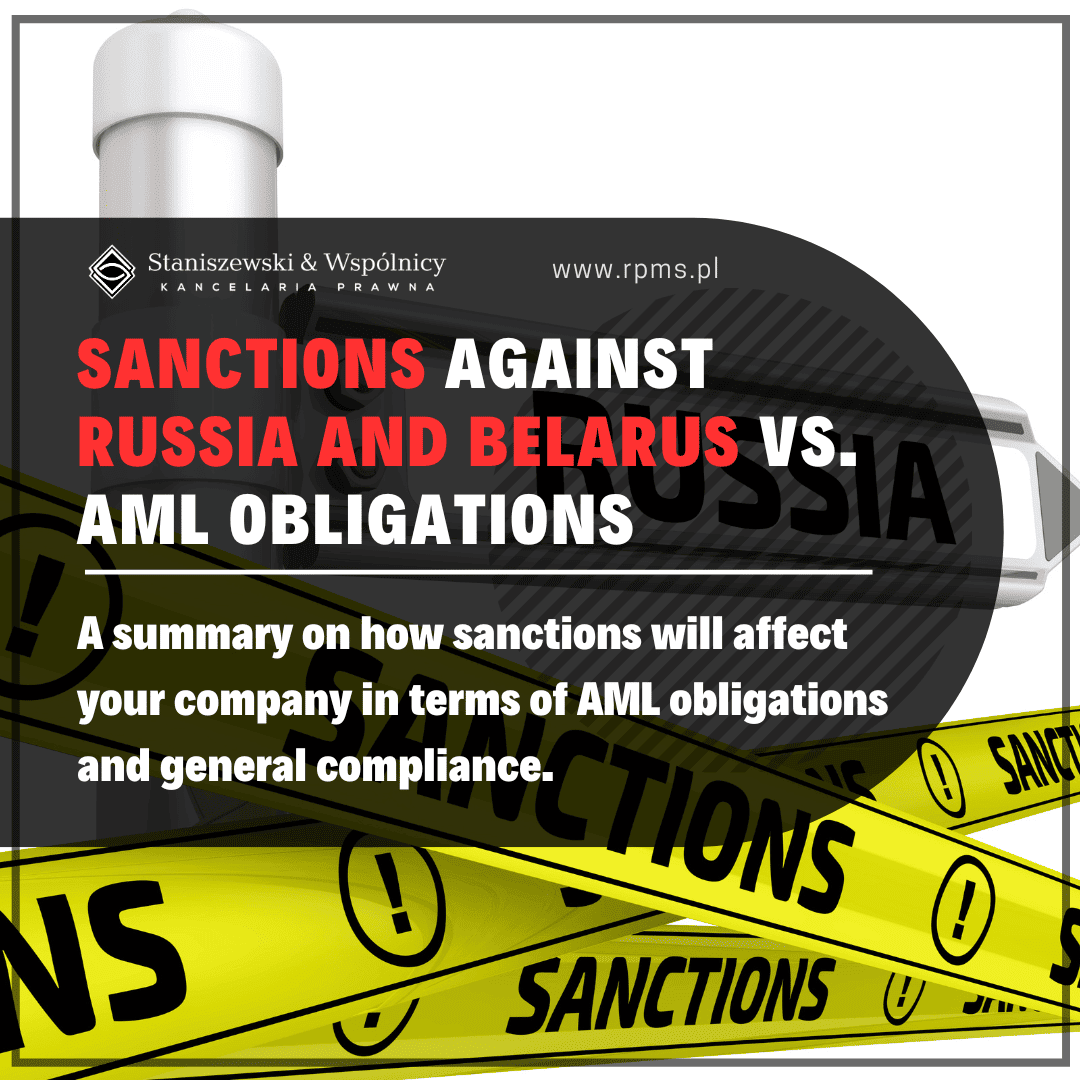Table of contents
Introduction – Definition of Bankruptcy Law

Bankruptcy law is a collective area of commercial law in Poland that encompasses procedures, principles, and potential consequences related to the insolvency of legal or natural persons and such a threat. Bankruptcy law constitutes a comprehensive set of legal provisions aimed at processing cases where a debtor is unable to satisfy its obligations to creditors. Furthermore, bankruptcy law aims to protect the interests of creditors and assess the debtor’s ability to settle existing liabilities. Bankruptcy law defines the circumstances under which a debtor is considered insolvent or at risk of insolvency. In brief, insolvency indicates that the debtor cannot meet current obligations within a specified period or that there is a presumption of insolvency, meaning a lack of capacity to fulfill outstanding monetary obligations.
Legal Regulations
The fundamental regulatory act governing the scope of bankruptcy proceedings is the Act of 28 February 2003 – Bankruptcy Law. This act regulates issues such as:
- principles of joint creditor claims proceedings against insolvent debtors who are entrepreneurs;
- principles of creditor claims proceedings against insolvent debtors who are natural persons not conducting business activities;
- consequences of declaring bankruptcy;
- principles of waiving obligations of an insolvent individual.

Entities Subject to Bankruptcy Proceedings

The scope of bankruptcy proceedings pertains to:
- natural persons;
- legal persons (including limited liability companies, simple joint-stock companies, joint-stock companies not conducting business activities);
- organizational units that are not legal persons;
- personal partners of commercial partnerships liable without limitation for the partnership’s obligations;
- partners of a partnership company.
However, not every entity is eligible to file for bankruptcy. The law excludes the possibility of declaring bankruptcy in relation to:
- the state treasury;
- local government entities;
- public independent healthcare facilities;
- legal entities and institutions established by law, unless the law provides otherwise, and those established in compliance with a statutory obligation;
- natural persons conducting agricultural holdings who do not engage in other business or professional activities;
- educational institutions;
- investment funds.
Who Can File for Bankruptcy? – Entities Authorized to File for Bankruptcy Declaration
According to the currently applicable regulations regarding bankruptcy proceedings, an application for bankruptcy can be filed by the debtor or any of its personal creditors. The specific list of entities authorized to submit such an application is contained in the Act of 28 February 2003 – Bankruptcy Law. Other entities authorized to file include:
| In relation to: | Authorized entity |
| General partnership, limited partnership, limited joint-stock partnership, and joint-stock limited partnership. | Each of the partners personally liable without limitation for the obligations of the partnership. |
| Legal entities and organizational units without legal personality, to which a separate law grants legal capacity. | Anyone who, based on the law, company agreement, or articles of association, has the right to conduct the debtor’s affairs and represent them, either independently or jointly with others. |
| State-owned enterprises | Founding body |
| Sole shareholder of a State Treasury company | Authorized representative of the Government, state legal person, authority, or other entity entitled to exercise rights from shares or stocks owned by the State Treasury |
| Legal entities, general partnerships, limited partnerships, limited liability partnerships, and limited joint-stock partnerships undergoing liquidation | Each of the liquidators |
| a legal entity registered in the National Court Register | a guardian appointed under Article 42 § 1 of the Act of 23 April 1964 – Civil Code |
| a debtor who has received public assistance exceeding 100,000 euros | the entity providing the assistance |
| a debtor against whom enforcement is conducted through forced administration or through the sale of an enterprise under the provisions of the Code of Civil Procedure | an administrator appointed in this proceeding |
| a subsidiary company participating in a group of companies | dominant company |

Stages of Bankruptcy Proceedings

It is important to note that bankruptcy proceedings are divided into two essential stages. These are:
- proceedings regarding the declaration of bankruptcy;
- actual bankruptcy proceedings.
Proceedings regarding the declaration of bankruptcy constitute the first stage of the entire bankruptcy process. This stage aims to determine whether there are sufficient grounds to declare the debtor bankrupt. This stage begins with the submission of a bankruptcy application, also known as the bankruptcy petition.
The main objective of the aforementioned procedure is to analyze the gathered evidentiary material and determine whether the debtor meets all the required criteria specified by applicable regulations, which may indicate insolvency. This, by the way, serves as the basis for initiating the proper bankruptcy proceedings. The procedure for declaring bankruptcy concludes with a decision either declaring bankruptcy, rejecting the application (e.g., due to formal deficiencies), or dismissing the application. During the initial stage of bankruptcy proceedings, the focus primarily lies in determining whether the application has been effectively submitted – meaning by an entity entitled to do so – and whether the debtor possesses insolvency capacity, as well as whether a state of insolvency exists. It should be noted in passing that insolvency capacity refers to the ability to independently shape one’s legal situation (capacity to conduct legal acts) and the ability to be a subject of rights and obligations (legal capacity).
Subsequently, if the court accepts the debtor’s submitted petition, the second stage of bankruptcy proceedings commences, i.e., the actual bankruptcy proceedings. This stage focuses on:
- managing the debtor’s assets,
- satisfying the creditors’ claims, and
- importantly, taking a series of actions aimed at effectively conducting the proceedings.
The main goal of the aforementioned bankruptcy proceedings is primarily the management of the debtor’s assets. For this purpose, a trustee is appointed who takes over the management of the debtor’s estate to optimize its utilization in order to satisfy the claims of all creditors. The estate comprises assets and liabilities, in other words, the debtor’s assets and obligations considered in bankruptcy proceedings. The trustee is required to conduct an inventory of the debtor’s assets and prepare a list of claims submitted by creditors.
As mentioned above, the primary objective of bankruptcy proceedings is to determine how to proceed when the debtor is unable to fulfill its obligations to creditors. To achieve this, during the actual bankruptcy proceedings, the possibility of reaching a settlement with creditors is presented. This settlement specifies the terms of debt repayment and debtor’s debt restructuring.
Types of Bankruptcy Proceedings
The Polish legal system distinguishes between two basic types of bankruptcy proceedings:
- liquidation bankruptcy;
- bankruptcy with the possibility of an arrangement.
Liquidation bankruptcy involves the sale of the debtor’s assets that form part of the bankruptcy estate, with the funds obtained used to satisfy the creditors’ claims. In this type of bankruptcy, the debtor loses the right to manage and dispose of their assets – they are required to identify and hand over their assets to the trustee. The trustee then initiates the liquidation process by selling components such as:
- movable property;
- real estate;
- businesses.
Liquidation of the bankruptcy estate can also occur through collecting claims from the debtor’s debtors and by executing or transferring other property rights included in the aforementioned bankruptcy estate. The funds obtained through these proceedings are distributed among the creditors according to a division plan. After all these actions are carried out, the bankruptcy court declares the conclusion of bankruptcy proceedings, and the debtor regains the right to manage their assets.
Arrangement Bankruptcy is a proceeding conducted in a situation where creditors express interest in preserving the business operations of the insolvent enterprise, as its continued functioning within the commercial sphere holds the potential to satisfy their claims. Conducting bankruptcy proceedings in this manner ensures that the insolvent enterprise continues its operations. Proposed arrangements concerning the restructuring of obligations that arose prior to the declaration of bankruptcy are submitted within appropriate timeframes by the insolvent entity, a creditor, or a judicial supervisor. Restructuring is a process encompassing a broad range of activities, including deferring payment of obligations, reducing the sum of debts, or spreading them across installments. All creditors who have registered and have been included on the list of claims vote on the arrangement, the approval of which is confirmed by a court decision. The evolving real-time situation of the insolvent entity can lead to modifications in the arrangement, depending on the circumstances. The arrangement process concludes upon the implementation of the arrangement, which is attested by a court decree. Subsequently, the insolvent entity regains the right to administer its assets.

Insolvency Capacity

In describing the insolvency capacity of legal entities in Poland, a distinction must be made between:
- Insolvency capacity of natural persons;
- Insolvency capacity of entrepreneurs.
The capacity to declare insolvency is a prerogative that is attributed to various distinct entities. Fundamentally, this capacity pertains to all entrepreneurs within the meaning of the Polish Civil Code. In the preceding paragraphs of this article, you will find a listing of entities subject to insolvency proceedings as well as those exempt from such proceedings, along with a table delineating the entities authorized to file for insolvency in relation to specific subjects (see Section 3,4). The prime requirement for insolvency capacity is the continual commercial activity of the given entity.
What Happens to the Insolvency Capacity in the Case of the Debtor’s Death?
At the outset, it should be indicated that declaring insolvency for a deceased individual who was engaged in business activity is permissible if the petition for insolvency is submitted within a year from the date of the deceased’s passing. This timeframe may be subject to alteration in the event of the appointment of a successor administrator, in which scenario, the insolvency of the deceased entrepreneur may be declared even after the lapse of a year from the entrepreneur’s death, but prior to the conclusion of the established period of the successor administration.
In such a situation, the entities authorized to submit an insolvency petition will be, in sequence:
- Creditor;
- Successor administrator;
- Heirs or children of the deceased, parents of the deceased, or spouse.

Consumer Bankruptcy

As mentioned above, the scope of the insolvency proceedings also applies to individuals who are not engaged in business activity. The declaration of consumer insolvency pertains to a debtor who has become insolvent. As mentioned at the very beginning of this article, this means that the debtor is unable to repay current obligations within a specified period or that there is a presumption of insolvency, i.e., a lack of capacity to fulfill overdue monetary obligations of the debtor. It should be noted, however, that this state must be persistent and last for at least 3 months in terms of the debtor’s ability to fulfill financial obligations.
To file an application for consumer insolvency, it is necessary to gather all financial obligations together. In case of difficulties in reconstructing all the possessed obligations, you may utilize the assistance of universal systems recording obligations, such as the Credit Information Bureau – it will enable you to obtain information regarding potential credit and loan obligations.
If the application for declaring bankruptcy is accepted and approved by the court, and no formal deficiencies are identified, then the course of action will initiate the appropriate bankruptcy proceedings.
The decision on declaring bankruptcy is published in the Court and Economic Monitor. At that point, upon publication, the court calls upon all individuals who have rights and personal claims to submit them within a month from the date of publication of the decision above on declaring bankruptcy. Failure to submit within the designated timeframe will result in the inability to invoke them during the course of the judicial process.
Subsequently, the trustee takes action by conducting an inventory of the debtor’s assets, meticulously examining the constituents of their estate. The trustee also assesses the valuation of these assets and verifies all consumer claims.
Consumer bankruptcy follows a devised distribution plan that outlines precisely which creditors will be satisfied and to what extent. The consumer bankruptcy procedure is of a liquidation nature; consequently, in order to fulfill the creditors’ claims, the entirety of the debtor’s estate is sold. An exception is made for the debtor’s primary residence, which remains exempt. In the event of selling the debtor’s residential property, the court may allocate a portion of the proceeds to cover the rent for the debtor for a period of at least 12 months, but no more than 24 months. It should be noted, however, that the debtor, in an effort to prevent the sale of their property, can indicate such an option in the proposal for an arrangement with the creditors.
In the event it is determined that the debtor intentionally or through gross negligence caused their insolvency or significantly exacerbated its degree, the creditor repayment plan cannot be established for a period shorter than 36 months or longer than 84 months.
Separate Bankruptcy Proceedings
It is also significant to note that the bankruptcy law includes exceptions from the general principles of bankruptcy proceedings. Exceptions are recognized with respect to:
- Developers;
- Banks;
- Insurance companies;
- Reinsurance companies;
- Bond issuers.
In these situations, the bankruptcy process is carried out with consideration of special regulations outlined in the third part of the bankruptcy law.

Summary

Bankruptcy law in Poland allows for a diverse approach to situations, taking into account the scale of the problem and circumstances. Bankruptcy proceedings encompass a broad range of activities, from initiating the process by filing an application to concluding the entire procedure, which involves settling liabilities. The various types of proceedings described in this article highlight the flexibility of the entire process, offering the opportunity to navigate challenging financial situations. It is important to remember that bankruptcy law is a complex procedure that may require consultations with an experienced lawyer, who can provide support and comprehensive advice throughout the course of the proceedings.














